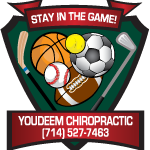Shockwave Therapy vs. Traditional Treatments: What You Need to Know
Understanding Shockwave Therapy
Shockwave therapy is a non-invasive treatment that uses shockwaves to treat various conditions. The shockwaves generate energy that helps stimulate the body’s natural healing process. It is commonly used to treat neck, lower back and upper extremity pain (shoulders, elbows, wrists), knee pain, and lower extremity pain (hip, knee, ankle, foot). During the therapy session, Dr. Youdeem applies gel to the treatment area before using a device to deliver the shockwaves. Shockwave therapy is said to promote tissue regeneration, reduce pain and increase range of motion.
Traditional Treatments Overview
Traditional treatments for various health conditions have been used for many years. They are typically the methods that were commonly practiced before newer approaches, like shockwave therapy, emerged. Traditional treatments often include medication, physical therapy, surgery, or lifestyle changes. These methods have been tried and tested, showing their effectiveness in managing a wide range of health issues. While shockwave therapy is gaining popularity, traditional treatments remain important options for many patients because of their familiarity to both patients and healthcare providers.
Efficacy of Shockwave Therapy
Shockwave therapy has shown promising results in treating various conditions such as neck, lower back and upper extremity pain (shoulders, elbows, wrists), knee pain, and lower extremity pain (hip, knee, ankle, foot), as well as other conditions such as tendonitis, plantar fasciitis, and muscle injuries. Studies indicate that shockwave therapy can help accelerate the healing process by stimulating blood flow and promoting tissue repair. Patients often experience reduced pain and improved mobility after undergoing shockwave therapy for the first time. Additionally, the procedure is non-invasive and carries minimal risks. It is essential to consult with a healthcare professional to determine if shockwave therapy is suitable for your specific condition.
Effectiveness of Traditional Treatments
Traditional treatments have been around for a long time and are well-known for their effectiveness in managing various health conditions. They have been tried and tested over the years and are considered reliable by many healthcare professionals. Physical therapy, medication, and surgery are some examples of traditional treatments that have been used successfully to treat a wide range of health issues. Many patients prefer traditional treatments because they are familiar, have a proven track record, and are often covered by insurance. Before considering shockwave therapy, it’s essential to explore the effectiveness of traditional treatments and discuss with Dr. Youdeem which option may be the best for your specific condition.
Conditions Treated with Shockwave Therapy
Shockwave therapy is commonly used to treat various conditions, such as tendonitis, plantar fasciitis, muscle strains, calcifications, bone fractures, and scar tissue. It can also be effective in promoting healing and reducing pain, making it a versatile treatment option for a range of musculoskeletal issues such as neck, lower back and upper extremity pain (shoulders, elbows, wrists), knee pain, and lower extremity pain (hip, knee, ankle, foot)
Common Conditions Addressed by Traditional Treatments
Traditional treatments are commonly used for addressing various conditions like arthritis, tendonitis, and plantar fasciitis. These treatments typically involve methods such as physical therapy, medication, and in some cases, surgery. They aim to reduce pain, improve mobility, and promote healing in the affected area.
Procedure and Application of Shockwave Therapy
Shockwave therapy is a non-invasive treatment that uses sound waves to help stimulate healing in the body. During the procedure, a device delivers these shockwaves to the affected area, promoting blood flow and reducing pain. Shockwave therapy can be used to treat various conditions such as tendon injuries, muscle strains, and bone fractures. The application of shockwave therapy is simple and typically does not require any anesthesia. Treatments are usually done on an outpatient basis, meaning you can go home the same day.
Process of Traditional Treatments
Traditional treatments for various health conditions typically involve medications, physical therapy, or surgery. Medications are often prescribed to alleviate symptoms or target the underlying cause of the condition. Physical therapy aims to improve strength, flexibility, and function through exercises and manual techniques. In more severe cases, surgery might be necessary to correct the issue. Remember that the effectiveness of traditional treatments varies depending on the specific condition and individual circumstances.
Side Effects and Risks
Shockwave therapy and traditional treatments like medications and surgery can have side effects and risks. Here is what you need to know:
-
Shockwave Therapy:
-
May cause redness, bruising, swelling, or discomfort at the treatment site.
-
Rare risks include skin injuries, nerve damage, or temporary pain flare-ups.
-
Traditional Treatments:
-
Medications can lead to nausea, dizziness, or allergic reactions.
-
Surgery poses risks like infection, blood clots, or anesthesia complications.
It’s important to discuss potential side effects and risks with your healthcare provider before starting any treatment.
Conclusion: Making an Informed Decision
When it comes to deciding between shockwave therapy and traditional treatments, it’s important to consider several factors to make a well-informed decision. Understanding the differences in effectiveness, recovery time, and potential side effects can guide you in choosing the right treatment for your specific condition and overall health goals. Be sure to discuss your options thoroughly with Dr. Youdeem to determine the best course of action for your individual needs.


